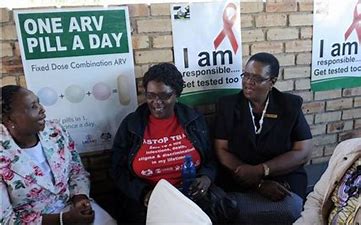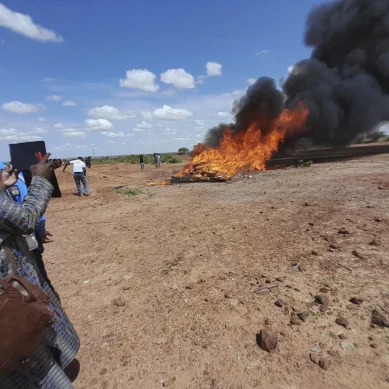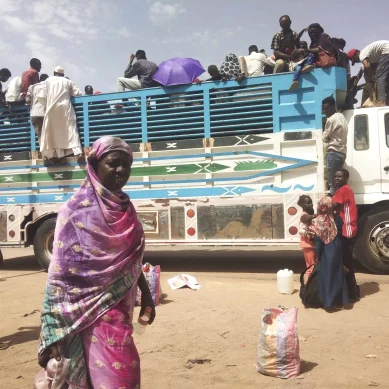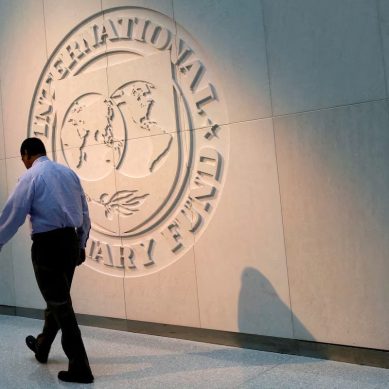
From my life, in my own deepest being, I know the power of stigma, discrimination, hatred and exclusion. And, after 25 years as a judge, I have been witness to three facts.
First, the destructive power of stigma and shame. Second, the damage punitive and discriminatory laws inflict on public health responses. Finally, how insufficient legal protections and inadequate legal remedies make the cruel load of HIV/AIDS infinitely worse.
About 37.7 million people globally are living with HIV. For most of us, heartening developments have alleviated the burdens of death and illness and shame. Today, we can fulfil our aspiration to reach the 90-90-90 target (90 per cent of those with HIV must know their status, 90 per cent of them to access treatment, and 90 per cent of those to attain viral suppression).
In Africa, however, the epidemic has a particular poignancy. Two-thirds of HIV cases are in sub-Saharan Africa, and here young women make up 63 per cent of new HIV infections.
As acutely, key populations (sex workers, LGBTQI+ people, drug users, those incarcerated, men who have sex with men) account for 65 per cent of new HIV infections worldwide.
Given these striking facts, the new strategy the UN body fighting to mitigate the epidemic – Unaids – announced was welcome. This highlights how inequalities exacerbate AIDS. Ending them is therefore at the core of Unaids’ new approach.
A rights-based approach is right. It illuminates how human rights are all interconnected. The AIDS epidemic vividly instances this: the right to health cannot, in thought or practice, be disconnected from the right to equality.
The lesson is clear: to overcome AIDS by 2030, we must achieve greater equality for all.
The good news is that protecting and respecting rights works in mitigating AIDS. Evidence from Unaids powerfully shows how “inequalities fuel the HIV epidemic and block progress towards ending AIDS”. As The Lancet rightly notes: “The success of the HIV response is predicated on equality – not only equality in access to prevention, care and treatment… but also equality under the law.”
Human rights programmes and sensible law reforms reduce stigma and discrimination. Yet far too little funding and effort is channelled here. The result is plain – in far too many societies, stigma sits as a dark burden on the backs of those living with and at risk of HIV and AIDS; discrimination permeates the societies and their laws – and repeal of misplaced, punitive laws is agonizingly slow.
Punitive and discriminatory laws target key populations most at risk of HIV/AIDS. They hit on peoples’ sexual orientation, gender identity, HIV status, drug use and sex work.
Thus, too many countries still criminalise LGBTQI+ persons. And transgender women are at enormously higher risk of contracting HIV.
And no one suffers discrimination solely on only one ground. The poisonous perils of discrimination mingle in a multiplicity of hostile grounds – what is rightly called “intersectionality”. A sex worker is attacked for their sexuality, gender, socioeconomic status and HIV status. The disquieting result: sex workers have a 26-times higher risk of contracting HIV.
In all this, the brutal force of the criminal law clenches the throat of good AIDS work. It intensifies inequalities, unfairness and exclusions.
The point is this: criminalising people living with HIV and punishing key populations undermines prevention efforts. It reduces uptake of services. And it can increase HIV infections.
These punitive laws do not merely “leave people behind”. They actively shove them out. They increase fear and stigma – and in turn push those most at risk away from health services and social protections.
As Unaids executive director Winnie Byanyima powerfully recounted: “Stigma killed my brother, he was HIV positive and would be living today but he was afraid to go to the clinic to fetch his ARVs because people he knew would find him there and would judge him.” Her conclusion? “We have to fight stigma and discrimination, they kill.”
Additional knock-on effects harm our societies. Discrimination seeps into data and evidence collecting, where criminalised and stigmatised populations are often underrepresented and omitted.
This reflects their day-to-day reality: their experience of an extreme form of stigma – being negated, invisible, wiped out.
This negation is profoundly harmful. It means that we do not know whether services are accessible and acceptable. It means important information may not be provided. It means violence and discrimination against invisible populations remain unknown, unaddressed.
So, we must ask: how can you remove barriers to access services if you do not even see the persons they are crushing? What can we do?
At least one answer: we can help create enabling, empowering, safeguarding legal environments.
- A Daily Maverick opinion / Judge Edwin Cameron of South Africa











